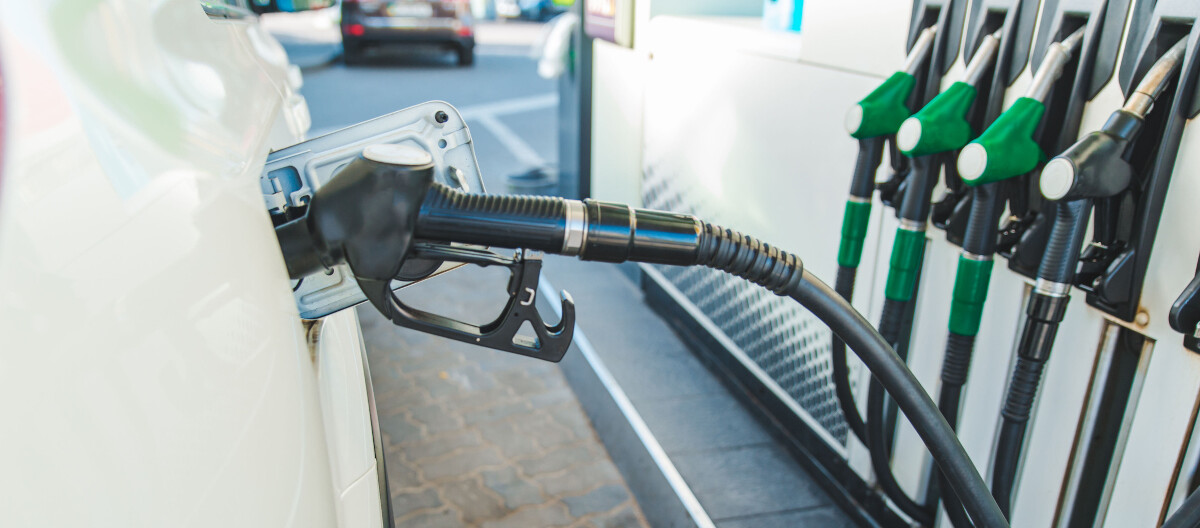What are e-fuels?
E-fuels are liquid synthetic fuels with a yellow colour. Since they are produced using electricity, they are not dependent on fossil fuels. The production process is called “power-to-liquid” and usually uses desalinated seawater and carbon dioxide from ambient air. These are ultimately chemical compounds of carbon and hydrogen.
E-fuels can be added to conventional fuels like petrol or diesel or be used on their own.
Pros of e-fuels
Carbon-neutral production gives e-fuels a major advantage over the fuels that have dominated the market to date. This is because e-fuels can support the drive towards decarbonisation. E-fuels have similar properties to petrol, diesel or kerosene, but the use of green electricity guarantees climate neutrality. Another significant advantage is that e-fuels can be used in internal-combustion engines and sold through the existing filling station network. Batteries are expensive, costly to produce and not without controversy – e-fuels would make them unnecessary.
Cons of e-fuels
Mass market development is still stalling for several reasons. E-fuels are not without their disadvantages. For example, burning e-fuels produces three times as much harmful carbon monoxide as conventional E10 super unleaded petrol, according to a study by Transport & Environment (T&E). Emissions of ammonia, a component of fine particulate matter, are twice as high. E-fuels are currently much less efficient than alternatives, as converting electricity into synthetic fuel leads to energy losses.
A discussion paper by research organisation Fraunhofer ISI lists further disadvantages. Global renewable electricity production is nowhere near sufficient to guarantee even a small proportion of e-fuel-powered vehicles in the coming decades. Furthermore, e-fuels are expensive, meaning that low-income households could struggle to afford them in the future. However, there is disagreement on this, with some experts putting the price at around the same level as the current price of petrol.

Current use of e-fuels
E-fuels are still a peripheral phenomenon in 2024. Not only are “E-fuel only” vehicles not on the market yet, there also isn’t enough synthetic fuel for them. Only five percent of businesses in the logistics sector are planning to use e-fuels in the near future. Even in the maritime sector, where a quota for synthetic fuels has recently been agreed, less than one percent of companies currently uses e-fuels.
Nevertheless, research institutions are working on developing e-fuels, and some car manufacturers, such as Audi and Porsche, are conducting intensive research. Motor racing is a pioneer in this field, with Formula 1 planning to only use e-fuels in its racing cars from 2026.
The future of e-fuels is uncertain
The EU and Germany have reached an agreement that will allow some ICE (internal-combustion engine) cars to be sold beyond 2035 provided they only fill up on e-fuels.
However, the UK government has previously dismissed e-fuels as “expensive” and ruled them out as an alternative fuel. The government will be going ahead with its ban on production of new ICE cars and vans from 2030.
According to a spokesperson from the UK’s Department for Transport:
“E-fuels are not proven technology, have expensive and complex supply chains, and emit much of the same pollutants as petrol and diesel… They might have a role for specialist vehicles, but we are not looking at them as a solution for normal cars and vans.”
Research organisation Concawe sees the supply of e-fuels as critical: its 2021 report found that e-fuels will only be able to cover 0.4 percent of road transport fuel requirements in 2030 and only 50 percent by 2050.
It seems more likely that, in the future, transport sectors will increasingly rely on e-fuels in areas like air and sea transport, where alternatives such as electric or fuel-cell drives are difficult to implement.
For cars, electromobility is currently much more energy-efficient, cheaper and already widely available. In this market, e-fuels can, at best, supplement direct use of renewable electricity, but are not a viable alternative.
Use of e-fuels in road haulage does not seem to be viable in the immediate future. By 2035, it will still cost 47 percent more to purchase and run a long-haul truck with a purely e-diesel engine than a comparable battery-electric truck, according to a further study by T&E.
